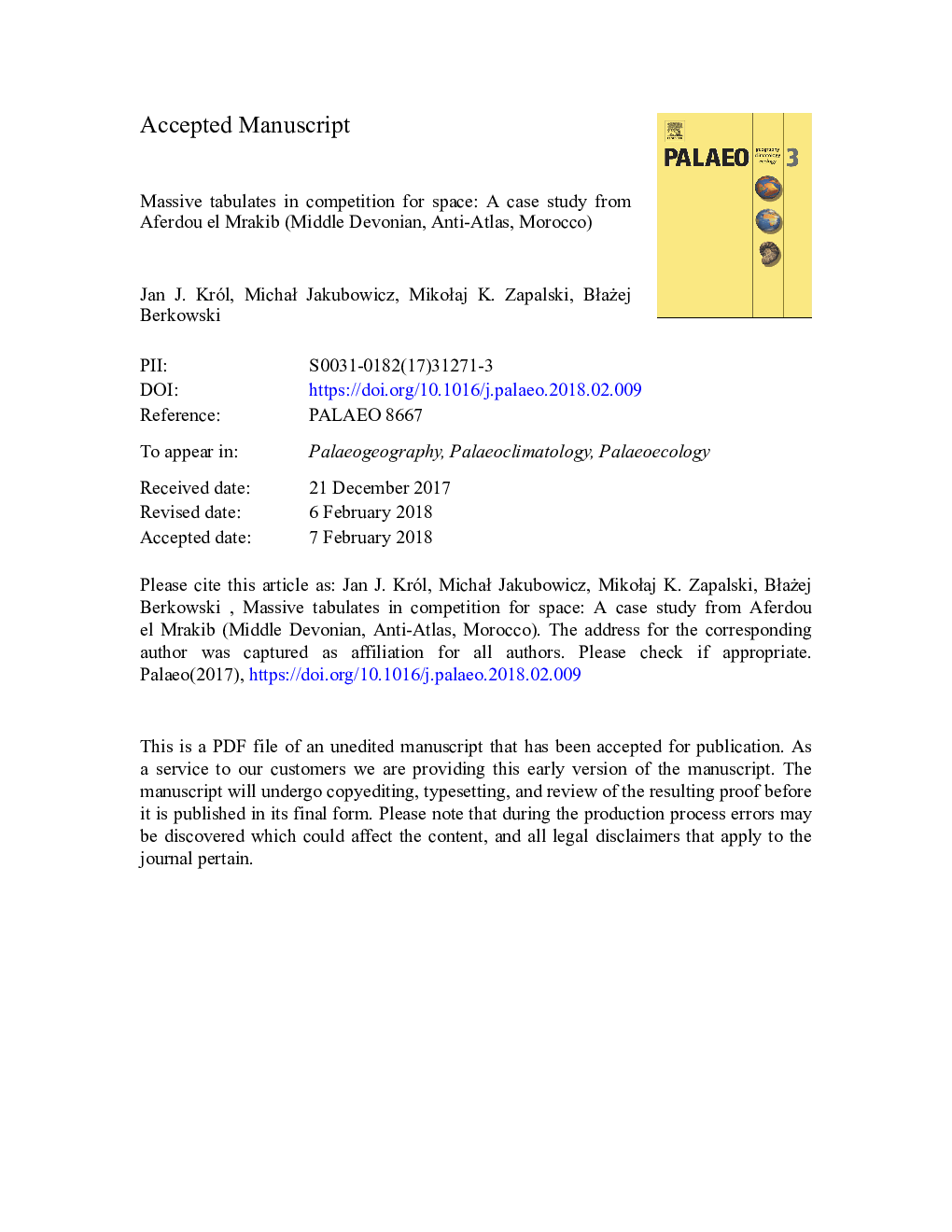| Article ID | Journal | Published Year | Pages | File Type |
|---|---|---|---|---|
| 8868257 | Palaeogeography, Palaeoclimatology, Palaeoecology | 2018 | 32 Pages |
Abstract
Aferdou el Mrakib, the largest carbonate buildup of the Moroccan Anti-Atlas, is known for its rich, Givetian fossil assemblage, dominated by corals. The core part of the reef was either removed by erosion, or pervasively dolomitised, with corals preserved mostly in the talus beds deposited in the fore-reef environment. This paper focuses on massive colonial tabulate corals, represented by Heliolites porosus and members of the genus Favosites, which constituted the largest tabulates of Aferdou el Mrakib and are frequently found in the reef-derived debris. The study reconstructs survival strategies of these corals based on an analysis of their morphologies, growth patterns, as well as records of interactions with other organisms. Both H. porosus and Favosites are represented predominantly by domal growth forms. As compared to the favositids, the coralla of H. porosus are considerably more abundant and attained notably larger sizes, with some of the colonies exceeding 1â¯m in diameter. Even the largest coralla were in places found toppled and in upside-down positions, indicating their downslope transportation by gravity flows, and possible periodic involvement of high energy events. H. porosus commonly encrusted and was encrusted by other organisms. The encrustations usually coincide with very frequent, sediment-induced growth interruption surfaces found within the coralla. The growth interruption surfaces rarely preserve the original sediment, attesting the presence of mechanisms of sediment removal by the coral. Similar surfaces occur also in the Favosites coralla, but they are less common and often lined by distinct sediment intercalations. Few encrustations on Favosites were demonstrated to have happened post-mortem, while encrustations on H. porosus typically formed syn-vivo, as evidenced by the coral successfully overgrowing its epibionts. H. porosus was a resistant species, which could endure frequent episodes of sediment influx and defend itself from aggressive encrusters. Favosites colonies, in turn, relied on selective settlement on more sparsely occupied substrates available in deeper parts of the Aferdou el Mrakib reef.
Related Topics
Physical Sciences and Engineering
Earth and Planetary Sciences
Earth-Surface Processes
Authors
Jan J. Król, MichaÅ Jakubowicz, MikoÅaj K. Zapalski, BÅażej Berkowski,
